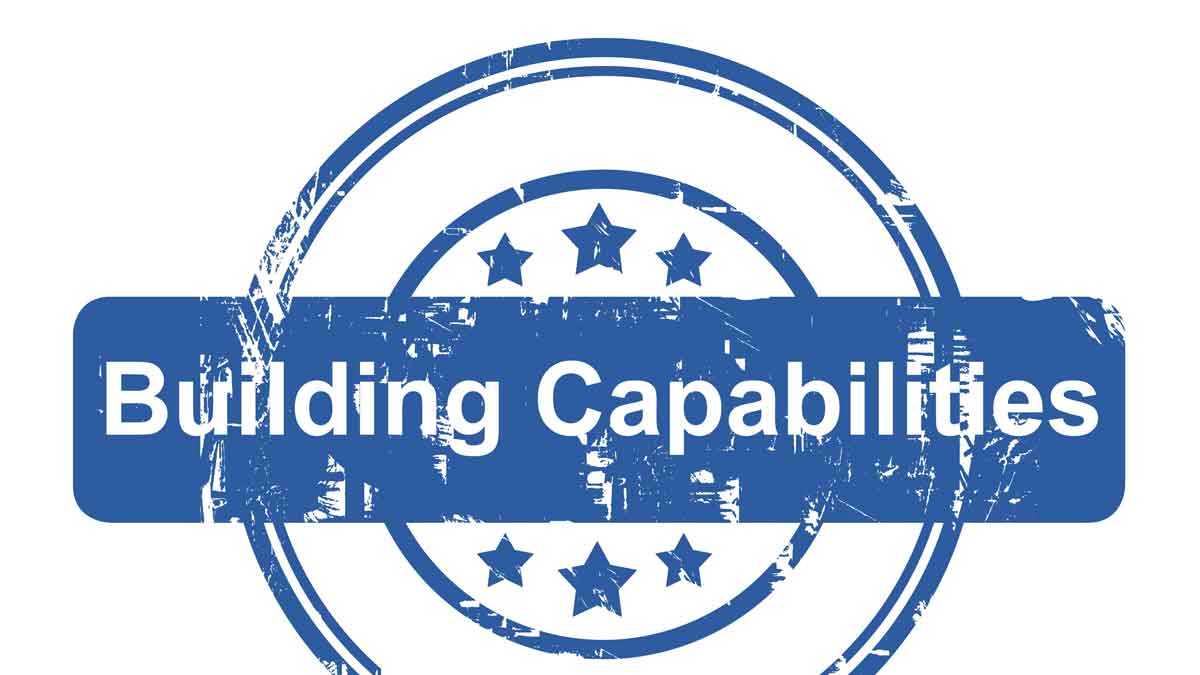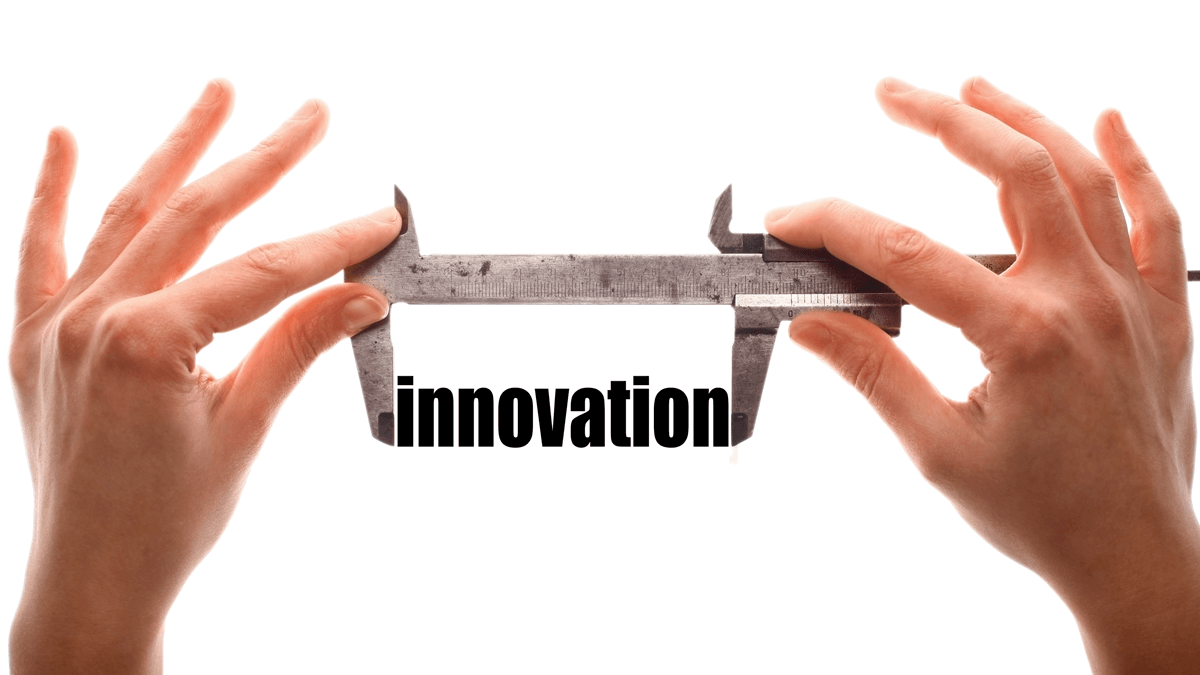Do you know if your company is improving key capabilities? Understanding customers’ needs, assessing competitive alternatives, creating data-driven value propositions, etc.? A race team that just counts wins—instead of pit crew times and engine torque—stops winning. Understand the capabilities that drive innovation and start measuring them.
More in Chapter 9 of Business Builders by Dan Adams
If your new product development process does not require customer interviews today, consider two questions: 1) Do I have competitors beating me to the new product punch because they are using such interviews to uncover market needs? 2) Could I leapfrog them by building a company-wide competency of B2B-optimized interviews?
More in e-book, www.reinventingvocforb2b.com
Imagine your business stopped innovating, your profits declined, and it is now budgeting time. To salvage next year, you’ll likely cut long-term costs, e.g. R&D or marketing, further reducing your ability to create high-value products. Next year, you’ll have even fewer options. This results in death or irrelevancy. If you’ve started this spiral, pull out quickly.
More in 2-minute video at 9. Avoid the commodity death spiral
Within every new product initiative, we must create a product spec. As a result, engineers need to know what to “build to.” Meanwhile, modern innovation methods begin with customer needs as the input to the process, leaving an important, and too-often unanswered question, “How do we get from a customer need to a product specification?” ... Read More
The average company only has a 25% success rate after it finishes its front-end work. With Six Sigma success, you’ve got three defects per million attempts… while your new product development is stuck at three defects per four attempts. Can you think of any other area in your company with this level of waste? Don’t let your competitors tame this frontier first.
More in white paper, www.catchtheinnovationwave.com (page 3)
Modern “Jobs-to-be-Done” (JTBD) thinking began with the most popular HBR article ever written: Ted Levitt’s “Marketing Myopia.” It begins this way: “Every major industry was once a growth industry. But some that are not riding a wave of growth enthusiasm are very much in the shadow of decline. Others, which are thought of as seasoned ... Read More
When you can count on profitable, sustainable organic growth, everything gets better. Employees have stable, rewarding careers. Industry-watchers admire your company. Customers want to work with you. Activist investors bother someone else. And it irritates competitors. What’s not to love?
But you have only one path to this type of growth. You must understand and meet customer needs better than others. How intense is your focus here? Is it greater than that of your competitors’? Or is your business distracted by other initiatives that can never deliver rapid, profitable, sustainable growth?
More in 2-minute video, Rethink your major initiatives
In the 1970’s, Detroit automakers didn’t realize they were in a battle for quality. but Toyota did. In later years, the battle moved from quality to productivity improvements. But those were both last century’s battles. Today the battle is over innovation… to deliver more value to customers than your competitors.
Does your business leadership team know it’s in a battle for innovation? One way to find out is to wait until a competitor upends your market with a blockbuster new product. A better approach is to start building innovation capabilities earlier and strong than those competitors. More in white paper, Catch the Innovation Wave
Also see 2-minute video, Catch the innovation wave
Everyone wants to use metrics to monitor their innovation. That's fine… but unless you’re using “intermediate” metrics, you could be missing 3 qualities of a good metric: 1) predictive, 2) insightful, and 3) actionable. Consider these 12 intermediate metrics for your business. ... Read More
It’s different for consumer goods innovators, who can often observe end-consumers and then come up with clever solutions. But B2B innovators must approach their customers with hat in hand and humbly ask, “Can you help me understand your world?” Remarkably few do this. Just as remarkably, B2B customers love it when they do. The customer becomes the teacher, the supplier the student… and both are rewarded with market-changing innovation.
More in white paper, Guessing at Customer Needs
Peter Drucker said there are only two purposes of business—innovation and marketing—and all other business functions are simply costs. Funny thing is that the unit of innovation and the unit of marketing are the same: customer outcomes. If you don’t understand customer outcomes—their desired end-results—you will neither innovate properly to satisfy those outcomes, nor effectively promote your solutions to them. A clever gentleman, that Mr. Drucker.
More in e-book, Leader’s Guide to B2B Organic Growth
We see three areas where leaders can have a greater negative impact on innovation than positive: 1) organizational friction (travel bans, spending freezes, hiring delays, excessive re-orgs, etc.) that slow innovation to a crawl, 2) spreading too few resources over too many projects so that nothing moves briskly, and 3) short-changing the front-end of innovation, so that a clear picture of customer needs is lacking. Companies pay a heavy price for keeping such leaders in place.
More in article, Accelerate New Product Innovation
Keep using the vitality index… new product revenue as % of total revenue. But understand three limitations: 1) It’s not predictive; it only tells you what has already happened. 2) It’s not prescriptive; it doesn’t suggest how to improve. 3) It’s not precise; is it a new product if we just change its color? Supplement the vitality index with 2 newer metrics: Growth Driver Index (GDI), and Commercial Confidence Index (CCI).
More in Leader’s Guide Videos Lesson 29, Employ leading growth metrics
1) It should be leading: Doing more of this will result in growth. 2) It should be actionable: Our employees can make this happen. 3) It should be benchmarkable: We can compare year-over-year and to our peers. 4) It should be high impact: If we improve these things, it will significantly impact growth. These two metrics pass all four tests: The Growth Driver Index (GDI) and the Commercial Confidence Index (CCI).
More in article, Beyond the Vitality Index: Two Metrics to Truly Assess Innovation Potential














